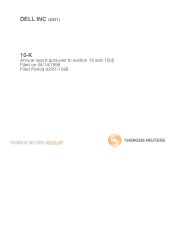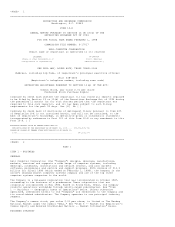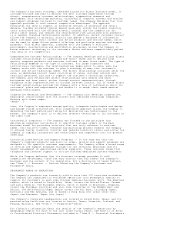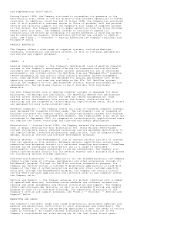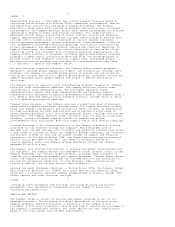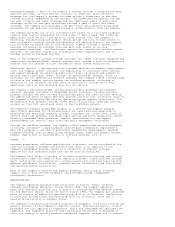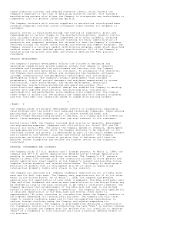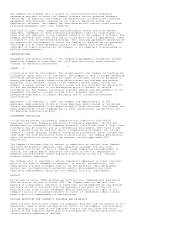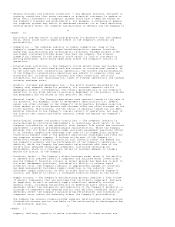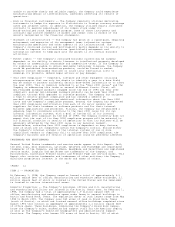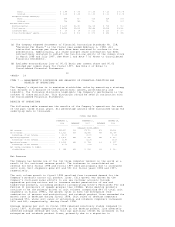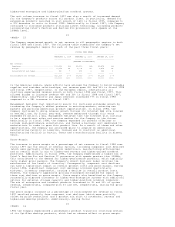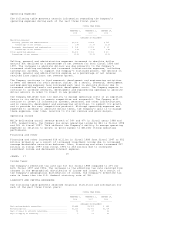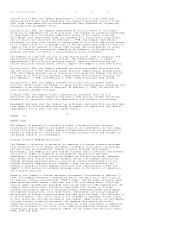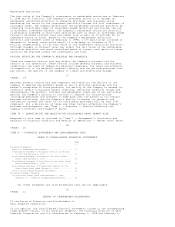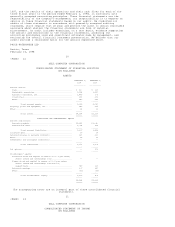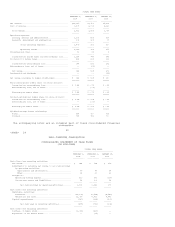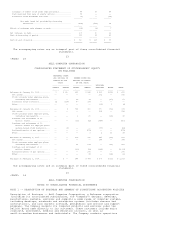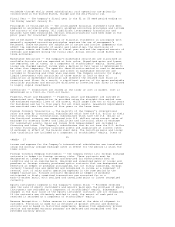Dell 1997 Annual Report Download - page 10
Download and view the complete annual report
Please find page 10 of the 1997 Dell annual report below. You can navigate through the pages in the report by either clicking on the pages listed below, or by using the keyword search tool below to find specific information within the annual report. unable to provide timely and reliable supply, the Company could experience
manufacturing delays or inefficiencies, adversely affecting its results of
operations.
- Risk on financial instruments -- The Company regularly utilizes derivative
instruments to hedge its exposure to fluctuations in foreign currency exchange
rates and interest rates. In addition, the Company utilizes equity instrument
contracts to execute repurchases of its common stock under its
Board-authorized stock repurchase program. Some of these instruments and
contracts may involve elements of market and credit risk in excess of the
amounts recognized in the financial statements.
- Strength of infrastructure -- The Company has grown at a rapid pace, requiring
enhancement and expansion of its management team, information systems,
manufacturing operations and other aspects of its infrastructure. The
Company's continued success and profitability partly depends on its ability to
continue to improve its infrastructure (particularly management and
information systems) to keep pace with the growth in its overall business
activities.
- Patent rights -- The Company's continued business success may be largely
dependent on its ability to obtain licenses to intellectual property developed
by others on commercially reasonable and competitive terms. If the Company or
its suppliers are unable to obtain desirable technology licenses, the Company
could be prohibited from marketing products, could be forced to market
products without desirable features or could incur substantial costs to
redesign its products, defend legal actions or pay damages.
- Year 2000 Compliance -- Computers, software and other equipment utilizing
microprocessors that use only two digits to identify a year in a date field
may be unable to process accurately certain date-based information at or after
the year 2000. This is commonly referred to as the "Year 2000 issue," and the
Company is addressing this issue on several different fronts. First, all
Dell-branded hardware products shipped since the end of 1996 are Year 2000
compliant; earlier Dell-branded hardware products can be made Year 2000
compliant through BIOS upgrades or software patches. The Company has assigned
a team to monitor product compliance and has created a website at
www.dell.com/year2000 containing additional information about the Year 2000
issue and the Company's compliance program. Second, the Company has requested
Year 2000 compliance certification from each of its major vendors and
suppliers for their hardware or software products and for their internal
business applications and processes. Finally, the Company has established a
separate team to coordinate solutions to the Year 2000 issue for its own
internal information systems, with a goal of having all of its internal
systems Year 2000 compliant by the end of 1998. The Company currently does not
expect that the cost of its Year 2000 compliance program will be material to
its financial condition or results of operations or that its business will be
adversely affected by the Year 2000 issue in any material respect.
Nevertheless, achieving Year 2000 compliance is dependent on many factors,
some of which are not completely within the Company's control. Should either
the Company's internal systems or the internal systems of one or more
significant vendors or suppliers fail to achieve Year 2000 compliance, the
Company's business and its results of operations could be adversely affected.
TRADEMARKS AND SERVICEMARKS
Several United States trademarks and service marks appear in this Report. Dell,
the Dell logo, Dell Dimension, Latitude, OptiPlex and PowerEdge are registered
trademarks of the Company, and DellWare, ReadyWare and SelectCare are registered
service marks. Inspiron and OptiFrame are trademarks of the Company, and
BusinessCare, DirectLine Premier Access and Premier Page are service marks. This
Report also contains trademarks and tradenames of other entities; the Company
disclaims proprietary interest in the marks and names of others.
10
<PAGE> 12
ITEM 2 -- PROPERTIES
At February 1, 1998, the Company owned or leased a total of approximately 4.2
million square feet of office, manufacturing and warehouse space worldwide, 3.1
million square feet of which is located in the United States and the remainder
is located in various international areas.
Domestic Properties -- The Company's principal offices and U.S. manufacturing
and warehousing facilities are located in the Austin, Texas area. At February 1,
1998, the Company had a total of approximately 1.9 million square feet of
office, manufacturing and warehouse space under lease in several buildings in
Austin and Round Rock, Texas. The expiration dates of such leases range from May
1998 to March 2005. The Company owns 360 acres of land in Round Rock, Texas
(north of Austin), on which are located several office buildings completed since
August 1994 that contain an aggregate of approximately 1.2 million square feet
of office space. These buildings, comprising the Company's Round Rock campus,
house the Company's sales, marketing and support staff for the Americas region,
as well as the Company's executive headquarters and administrative support
functions. The Company also leases 570 acres of land in Austin, 120 of which

